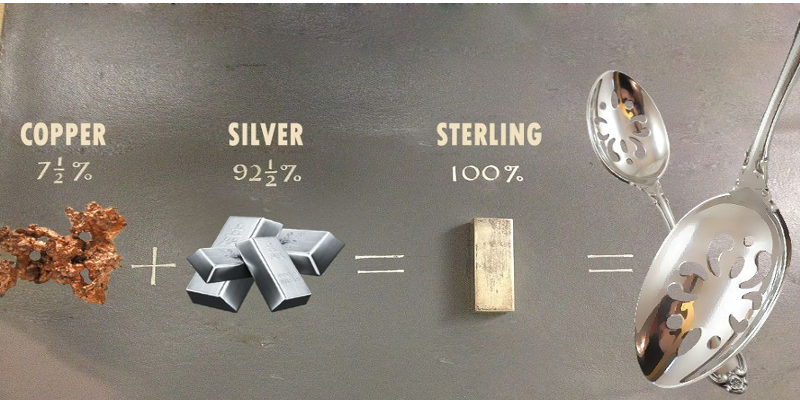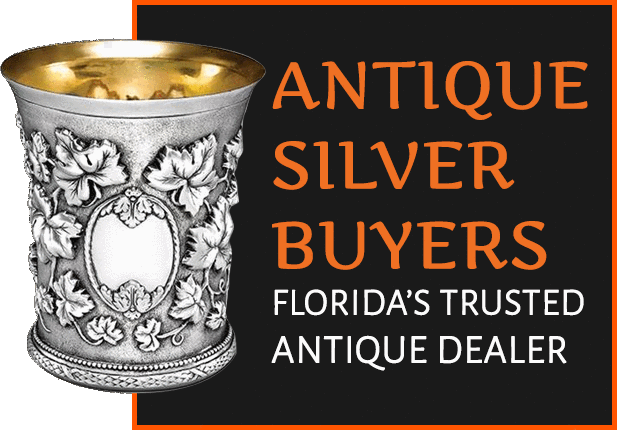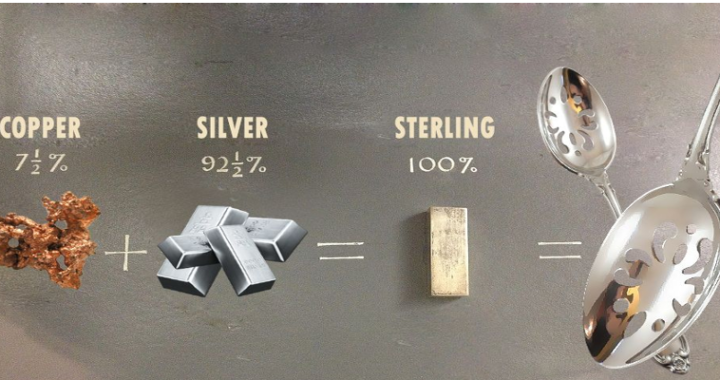Sterling silver is a popular metal alloy used in the making of jewelry. It combines silver with other metals, such as copper, making it more wear and tear-resistant. The metal composition must have at least 92.5% silver to be classified as sterling silver. There are various methods for identifying authentic sterling silver, including the white cloth test, nitric acid test, magnet test, smell test, and hidden marking test. Sterling silver is hypoallergenic, durable, customizable, timeless, and affordable, making it an excellent choice for creating jewelry and other items. Regular cleaning and proper care are necessary to maintain its beauty and value. So, Sterling Silver is an economical and sturdy metal alloy perfect for making jewelry.
The Composition of Sterling Silver
Like gold, silver is delicate and soft in its purest form. Unfortunately, it doesn’t make it a durable material. To make it more useful, pure silver is usually mixed with metal alloys like copper to improve strength and durability. When pure silver is combined with less than 7.5% alloy, it is referred to as sterling silver. Sterling silver will contain at least 92.5% silver.

Identifying Sterling Silver
If you have a piece of silver jewelry or silverware and want to know if it’s made of sterling silver, you can take a few steps to test it.
- The white cloth test. Use a soft white cloth to rub down your item gently. If there are black marks on the fabric when you pull it away, this is a good sign that the material is sterling silver.
- The nitric acid test. Adding drops of nitric acid to real sterling silver won’t have any effect, but the same can’t be said about non-silver metals. When added to other options, nitric acid will lose color.
- The magnet test. It is a fairly straightforward test, as magnets don’t affect silver. Holding a magnet up to the silver piece and finding that the item is attracted to the magnet should be a clear sign that you don’t have a sterling silver object.
- The smell test. Take a whiff of the silver item. Does it smell something metallic? That means you’ve got something other than sterling silver, as too much copper is present. Sterling silver should not have a smell.
- The hidden marking test. Genuine sterling silver – especially jewelry – will have an unnoticeable marking on it stating “Sterling Silver,” “925,” or “Ster.” If you don’t see any of these markings, you should be careful about whether or not you have the real thing.
Sterling silver doesn’t come cheap and requires a considerable investment, regardless of whether you are buying a silver antique or pendant. Fortunately, it is a worthwhile investment, as the piece’s value will increase with time.
Cleaning Your Sterling Silver
There are many metals out there that are tarnish-resistant, but unfortunately, sterling silver isn’t one of them. If you have a silver piece you don’t wear or use often, a tarnish can build up on the surface. Regular polishing using a silver cleaning is a simple and effective solution, and it is important to clean off the tarnish before it can build. Otherwise, you may end up damaging sterling silver pieces long-term.
You can save time, money, and hassle by purchasing sterling silver jewelry or antiques from a reputable dealer. This way, you can ensure that you are making a sound investment.
The Benefits of Sterling Silver
Sterling silver is a versatile and attractive metal with many benefits, making it an ideal choice for jewelry and other items. Some of the advantages of sterling silver include:
- It is hypoallergenic. Unlike other metals that can cause allergic reactions, sterling silver is safe for most people. It does not contain nickel, a common allergen for many people.
- It is durable. Sterling silver can last for a long time if properly cared for. It is resistant to wear and tear and can be easily repaired if damaged.
- It is easy to customize. Sterling silver can be molded into various shapes and designs, making it perfect for creating unique and personalized pieces. It can also be engraved, stamped, or embellished with gemstones.
- It is timeless. Sterling silver has a classic and elegant appeal that never goes out of style. It can complement any outfit and occasion and be mixed and matched with other metals and accessories.
- It is affordable. Compared to other precious metals such as gold and platinum, sterling silver is much more affordable and accessible. It offers a high-quality and luxurious look without breaking the bank.
Sterling silver is a beautiful metal that can improve appearance and express personality. Whether you are looking for a simple ring, a statement necklace, or a stunning bracelet, you can find a sterling silver piece that suits your taste and budget.







